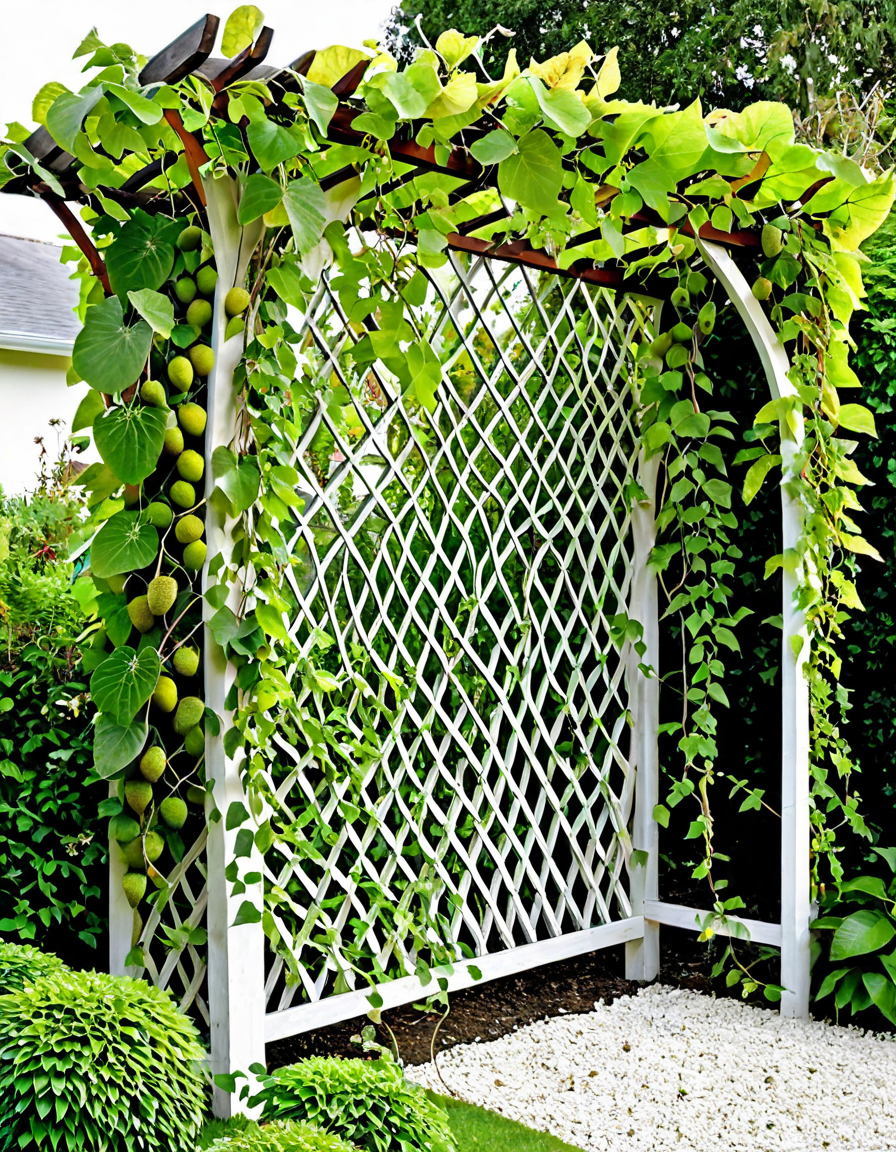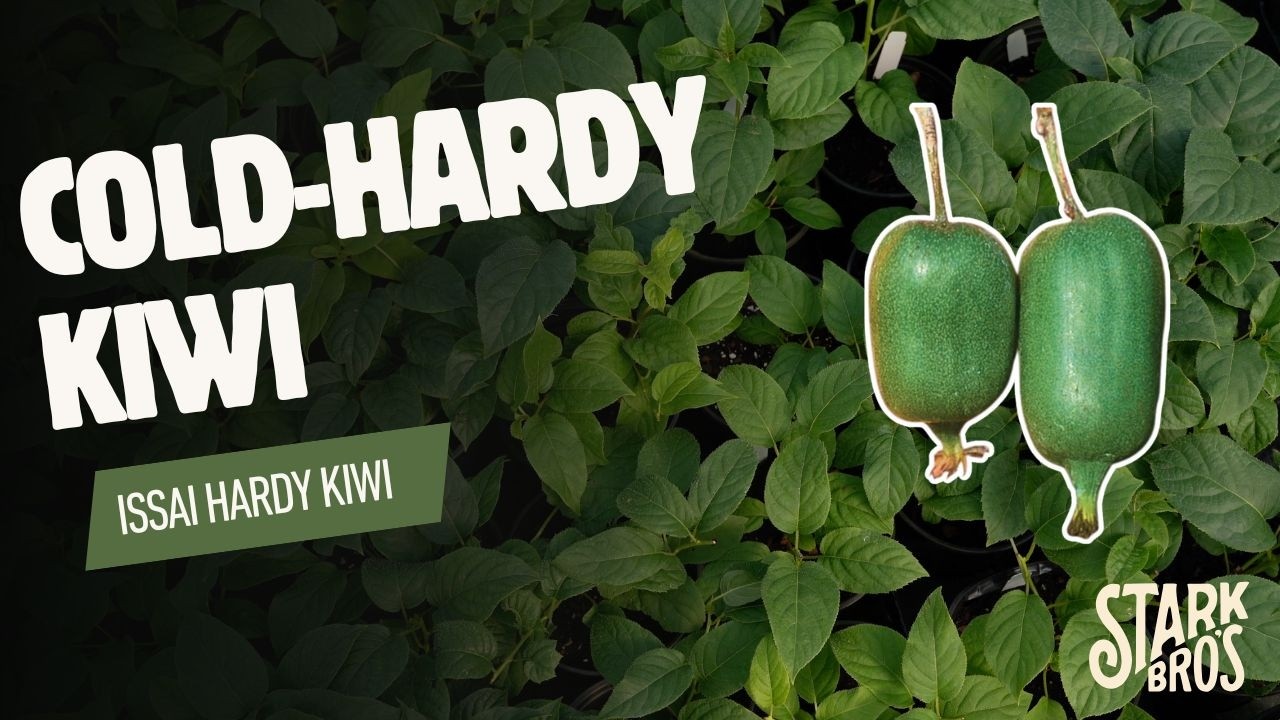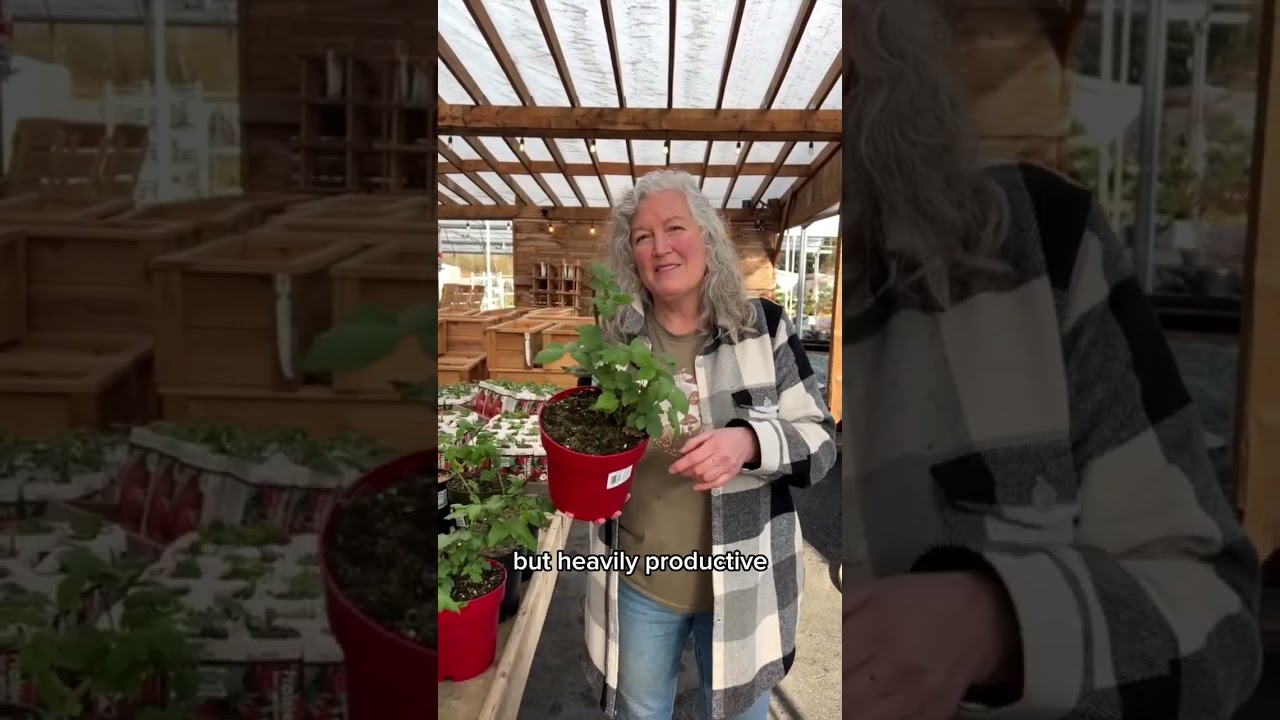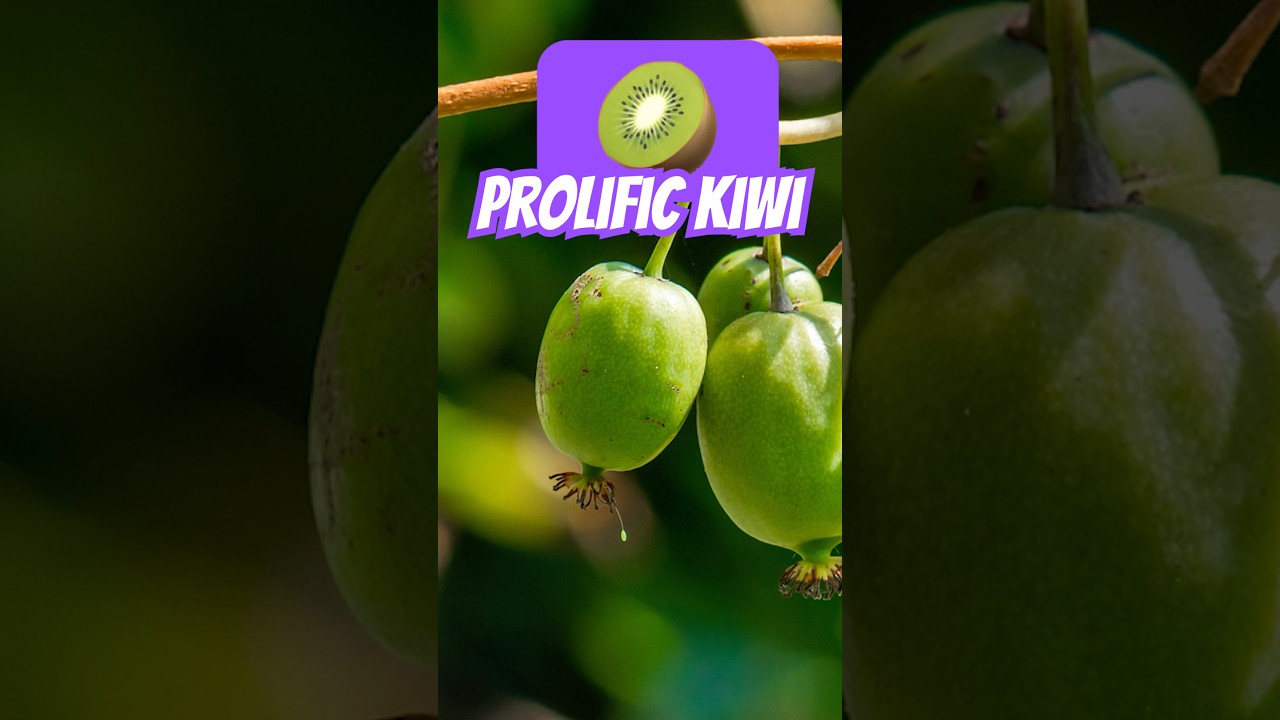Kiwi vines, known for their delicious fruits and luscious green leaves, can transform any garden into a vibrant space. If you’re considering adding these unique plants to your backyard, you’re in for a treat. In this guide, we’ll share essential tips and intriguing facts about kiwi vines, including varieties like the hardy kiwi or kiwi berry, designed to help both novice and seasoned gardeners flourish in their gardening endeavors.
1. Top 5 Essential Tips for Growing Kiwi Vines Successfully
1. Choose the Right Variety
When diving into kiwi vine gardening, the first step is picking the right variety. The traditional green kiwi, or Actinidia deliciosa, is well-loved for its tangy taste. Alternatively, the hardy kiwi, known as the kiwi berry (Actinidia arguta), offers a delightful twist. These smaller fruits are sweeter and can be eaten whole, making them popular among home gardeners. Decide which best suits your taste and garden space.
2. Site Selection and Soil Preparation
Kiwi vines thrive in well-drained soil enriched with organic matter. Look for a sunny spot that allows these climbers plenty of room to grow. It’s best to amend your soil with compost or well-rotted manure, boosting fertility for optimal growth. For garden-friendly amendments, check out brands like Espoma Organic Fertilizer, which provides products tailored for fruits. Good soil can make all the difference!
3. Support Structures
A kiwi vine’s nature as a climber means it needs reliable support, like a sturdy trellis, arbor, or even a fence. Consider installing the “Green Genie” trellis system, which is an easy-to-use option for maximizing vine growth and airflow. Not only does good support lead to better fruit development, but it also keeps the foliage healthy and protects the plant from disease.
4. Watering and Pruning Techniques
Consistent moisture is vital for kiwi vines; However, be cautious of overwatering, which can cause root rot. Implementing a drip irrigation system effectively provides the moisture needed without waterlogging the plant. Additionally, pruning in late winter is essential. Aim to shape your plant by cutting back about 50% of last year’s growth, promoting lush greenery and fruitful vines.
5. Pest and Disease Management
Kiwi vines can be susceptible to pests like aphids and spider mites. Turning to organic solutions, such as insecticidal soap or neem oil, helps manage infestations. Additionally, keep an eye out for fungal diseases, including powdery mildew. Applying a protective fungicide can safeguard your plants and ensure a hearty harvest.

2. Understanding the Golden Noodle: The Kiwi Vine’s Unusual Cousin
Don’t forget to explore the golden noodle! This enticing kiwi variety, particularly the Himrod, showcases elongated, noodle-like fruits that add a delightful twist to your garden. Though its flavor is milder compared to traditional kiwis, its unique shape and vibrant color offer a feast for the eyes. Similar to the traditional kiwi vine in terms of care and requirements, the golden noodle can broaden your gardening experience.
3. Kiwi Variety Comparisons: Green Kiwi vs. Kiwi Berry
Both the green kiwi and kiwi berry shine in their ways. Here’s a quick overview to help you decide which variety to cultivate:
| Feature | Green Kiwi (Actinidia deliciosa) | Kiwi Berry (Actinidia arguta) |
|———————-|————————————–|————————————–|
Exploring these two varieties allows you to choose the best fit for your personal taste and garden space.
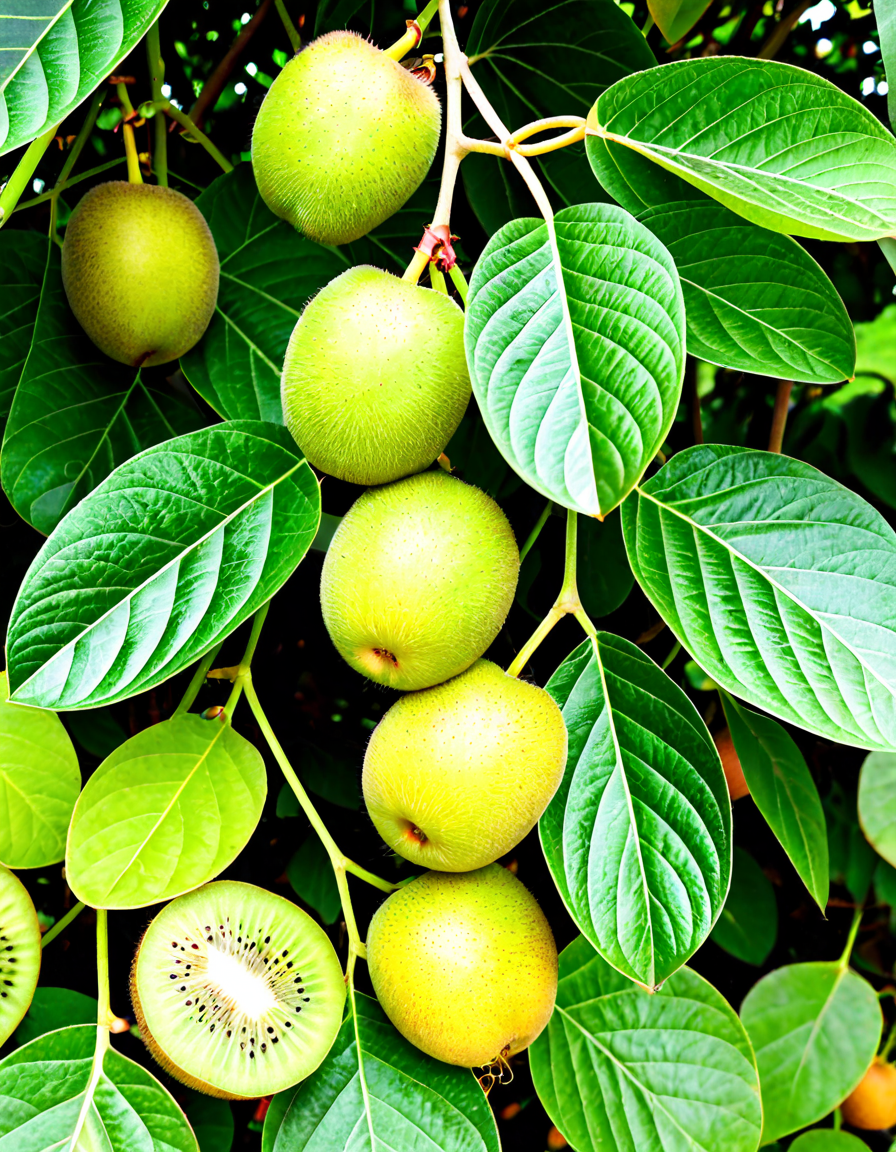
4. Nutritional Benefits of Kiwi Fruits: Why They Belong in Your Garden
Kiwi fruits, whether green or berry, are nutritional powerhouses. Rich in vitamin C, fiber, and antioxidants, they offer numerous health benefits. Did you know a serving of kiwi can provide more vitamin C than an orange? Including kiwis in your diet supports immune function and enhances skin health. By growing kiwi vines, you not only enjoy fresh fruits but also boost your overall well-being.
5. Creating a Fruit-Centric Garden: Combining Kiwi Vines with Other Plants
When designing your garden, consider companion planting to enrich the health of your kiwi vines. Strawberries or raspberries thrive in conditions similar to kiwi and can deter pests naturally. Additionally, marigolds serve to attract beneficial insects, creating a balanced ecosystem in your garden. A diverse garden invites harmony, keeping your kiwi vines happy and productive.
Innovative Insights and Future of Kiwi Vine Cultivation
With the growing interest in sustainable practices, kiwi vine cultivation is moving toward organic and eco-friendly solutions. New innovations are emerging, including genetically modified hybrids that boast disease resistance and self-pollination. These advancements can make it easier, especially for novice gardeners, to cultivate thriving kiwi vines in their own backyards.
Dive into the world of kiwi vine gardening and discover a rewarding connection to nature and nature’s bounty. Remember that patience is essential, and you might find delightful surprises in your harvests along the way! Happy gardening!
As you’re exploring kiwi vine gardening, remember the benefits and joys of your endeavor are endless. Whether you’re munching on delicious kiwi berries or enjoying the zing of green kiwis, gardening opens a world of flavorful moments. So, grab your gardening tools and get started!
Kiwi Vine: Fun Facts and Trivia You Should Know
Did You Know?
If you think kiwi vines are just about tasty kiwis, think again! Kiwi vines, which can grow quite large, are also known for their stunning foliage. The leaves can be heart-shaped and create a beautiful green canopy, making them perfect for trellises. Just like Howglow horses” can add a vibrant flair to equine life, kiwi vines bring beauty to any garden. These vines can adapt to different growing conditions, but they do thrive in well-drained soil and sunny spots—so keep that in mind when planting!
Weird & Wonderful Characteristics
Here’s a quirky tidbit: kiwi vines are quite the climbers and can grow over 20 feet if you let them! That’s about as impressive as the average weight Of a horse, which can easily be hundreds of pounds! Isn’t nature fascinating? Speaking of surprises, the fruit of a kiwi vine is a small, fuzzy wonder. Did you know that the inside of a ripe kiwi has a vibrant green color with tiny black seeds? It’s so visually appealing you could almost mistake it for a dish inspired by a celebrity like Ashley Moore when she’s in her foodie phase!
Fun Facts to Impress Your Friends
When it comes to kiwi vines, they don’t just give you fruit; they also provide a lesson in patience. It takes about three years for the vines to start producing fruit—talk about a wait! Throughout that time, you’ll need to tend to them carefully. On a related note, if you ever see tiny tiny tiny tiny Puppies, you might appreciate the wait for those delightful cuties! Lastly, if you’re curious about gardening and need to brush up on your herbivore knowledge, the royal python feeding chart isn’t just for reptiles—it can also inspire you to feed your plants with care and technique.
So, as you grow your garden with kiwi vines, you’re not just cultivating a plant; you’re tapping into a world full of delightful trivia and fascinating growth stories! And who knows, these vines might just be the next big talk at your local gardening club, sparking conversations that could rival the mysteries of who shot Jfk?
